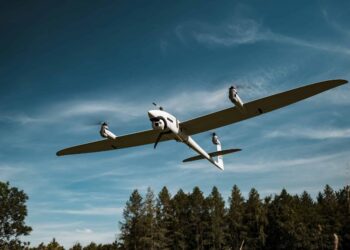US Air Force,
WASHINGTON: NASA and the Northrop Grumman Corp. of Los Angeles have unveiled the first Global Hawk aircraft system to be used for environmental science research, heralding a new application for the world's first fully autonomous high-altitude, long-endurance aircraft. The debut took place Jan. 15 at NASA's Dryden Flight Research Center in Edwards, Calif.
NASA and Northrop Grumman are returning NASA's two Global Hawk aircraft to flight this year under a space act agreement signed in May 2008. NASA plans to use the aircraft for missions to support its Science Mission Directorate and the Earth science community that require high-altitude, long-distance airborne capability.
“Today marks the debut of NASA's newest airborne science capability,” said Kevin L. Petersen, director of Dryden. “These Global Hawks represent the first non-military use of this remarkable robotic aircraft system. NASA's partnership with Northrop Grumman has made this possible.”
The Air Force transferred the Global Hawks to NASA in December 2007. They are among the first seven built in the original Advanced Concept Technology Demonstration program, which the Defense Advanced Research Projects Agency sponsored. Northrop Grumman specialists will share in the use of the aircraft to conduct their own flight demonstrations for expanded markets, missions and airborne capabilities, including integration of autonomous aircraft systems into the national airspace.
Global Hawk can fly at altitudes up to 65,000 feet for more than 31 hours at a time. To date, the aircraft have flown more than 28,000 hours.
|
One of two Global Hawk aircraft that were transferred from the Air Force to NASA in December 2007 will begin missions to support NASA's Science Mission Directorate and the Earth science community. The aircraft, located at the Dryden Flight Research Center at Edwards, Calif., brings a new capability to the science community for measuring, monitoring and observing remote locations of the Earth. The two Global Hawks were the first and sixth aircraft built for the Air Force under the original development program. (NASA photo/Tony Landis)
More Military Pictures
|
The National Oceanic and Atmospheric Administration, or NOAA, also is partnering with NASA to develop this new airborne research tool. NOAA officials are participating in the project management and piloting of the NASA Global Hawks and the development of scientific instruments and future Earth science research campaigns.
“The Global Hawks will provide superb new measurement possibilities for our climate science and applications programs,” said Michael Freilich, director of NASA's Earth Science Division in Washington.
“This collaboration is a model for NASA's wide-ranging Earth-observation activities to advance our understanding of Earth as an integrated system, which are critical to developing responses to environmental change here and around the world,” he said.
NASA's initial use of the aircraft to support Earth science will be the Global Hawk Pacific 2009 program. This campaign will consist of six long-duration missions over the Pacific and Arctic regions in the late spring and early summer of 2009. Twelve scientific instruments integrated into one of the NASA Global Hawk aircraft will collect atmospheric data while flying high through Earth's atmosphere in the upper troposphere and lower stratosphere.
Global Hawk has many potential applications for the advancement of science, improvement of hurricane monitoring techniques, development of disaster support capabilities, and development of advanced autonomous aircraft system technologies. For example, Global Hawks were used to help monitor wildfires in Southern California in 2007 and 2008.
NASA's Dryden Flight Research Center, located on Edwards Air Force Base in the Mojave Desert of Southern California, is NASA's primary installation for atmospheric flight research. It has supported NASA's technology development efforts in aeronautics, environmental science, space exploration and space operations for more than 60 years.
(Courtesy of NASA News Service)










